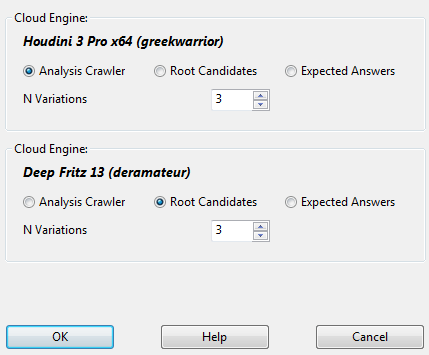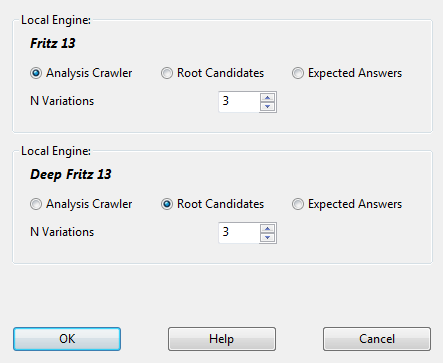|
Cloud Analysis |

|

|
|
|
Cloud Analysis |

|

|
Cloud Analysis
Board Window - Analysis - Cloud Analysis
![]()
Chess players usually analyse their games and chess positions interactively. They try out moves on the board and let them be evaluated by an engine that is continuously running. Unfortunately there is not always enough time to let the analysis run deeply enough. The opposite method is an analysis that runs by itself, in which an engine examines a position for a long time. There are two ways to do this in ChessBase: Deep Analysis and Cloud Analysis.
Cloud Analysis is a deep analysis in which several engines run in parallel, which saves a lot of time and increases the accuracy of the analysis. These engines either run on different computers, or they all run on one powerful computer, on which they have to share the ressources. The advantage of the Cloud Analysis is that the analysis can be carried out without using the hardware and software ressources of the local computer.
In the Cloud Analysis the engines adopt different roles. One engine always controls the analysis. Another engine evaluates the candidate moves from original position to make sure that the best possible depth is reached. One or more engines evaluate the possible replies to the candidate moves. Their search only changes when the candidate moves change.
A practical configuration is to use two to four engines. One controls the analysis, one evaluates the candidates, and optionally one or two reply to the strongest candidate moves. It is also possible to use several candidate engines if the moves they suggest are different.
If the cloud engines run on other computers the analysis continues reliably even if individual engines stop running. This can happen if an Internet connection is interrupted or someone else takes control of an engine. The controlling engine at least must run on the local computer. If additional cloud engines are added they are automatically assigned roles.
The function offers the deep analysis of a position with several engines that are running in parallel. It can be used with both cloud engines and local engines on your own computer. However, if local engines are used they must share ressources, which makes them slower. Cloud engines can run on other computers that you own, or they can be rented.
This function is only useful if more than one engine is used.

After starting the analysis you can tell the selected engines what they have to do.

In the Cloud Analysis one engine works continually evaluating the candidate moves of the initial position. Another engine (the "analysis crawler") makes these candidate moves and generates a variation tree. Unlike the Deep Analysis (see above) the controlling engine accepts the candidate moves in every iteration without losing any time.
It is also possible for several engines to evaluate replies to the candidate moves simultaneously. These replies will also be accepted without any delay. These engines work non-stop, and they will only start again when the candidate moves change. By doing this you can build your own cluster.
During the Cloud Analysis it is possible to add other engines to the cloud without interrupting the analysis.
They automatically take over the correct roles. If cloud engines stop running the analysis will continue as long as at least one local engine is still running.
If engines are loaded in advance their roles can be configured. It is more useful to work with different candidate engines so that the analysis is not identical.
Cloud Analysis with locally stored chess engines
You can use this analysis without cloud engines if you have a powerful computer with several chess installed.

To do this start one or more kibitzers in the board window.
Note: Variations that are in the notation at the start of the analysis are never deleted and are always analysed, unless they are the results of a previous Cloud Analysis.
Moves that have been marked with a question mark are never analysed.